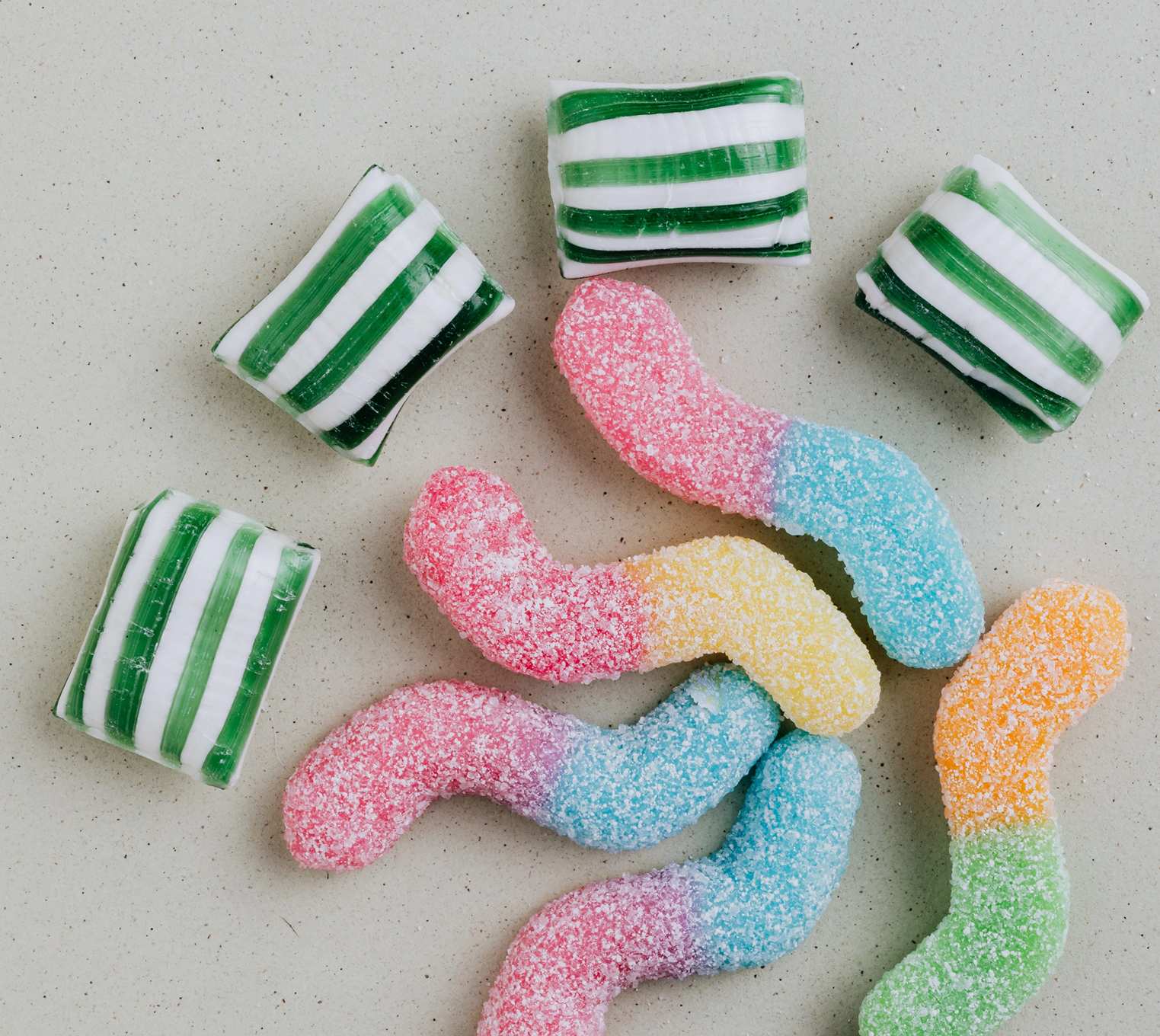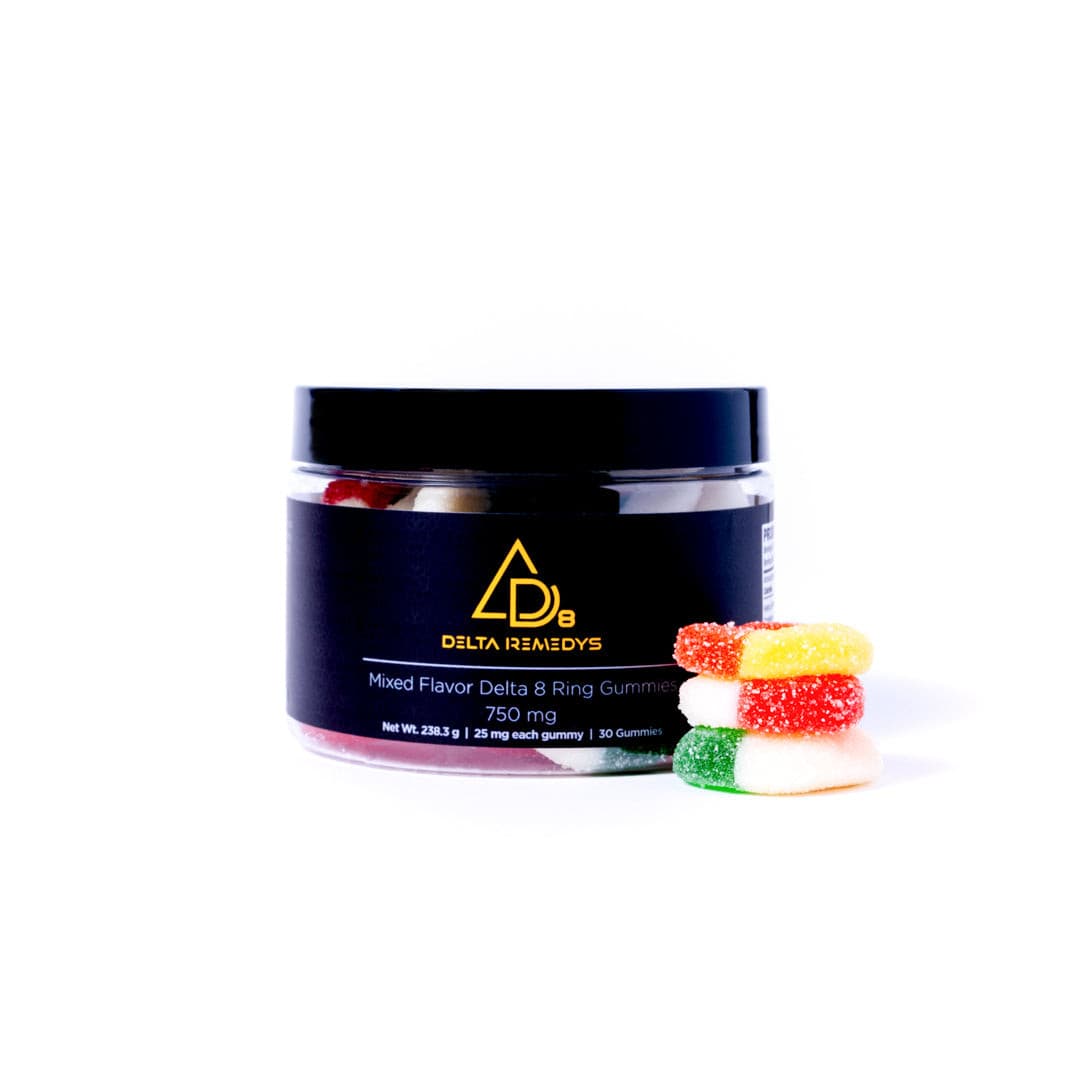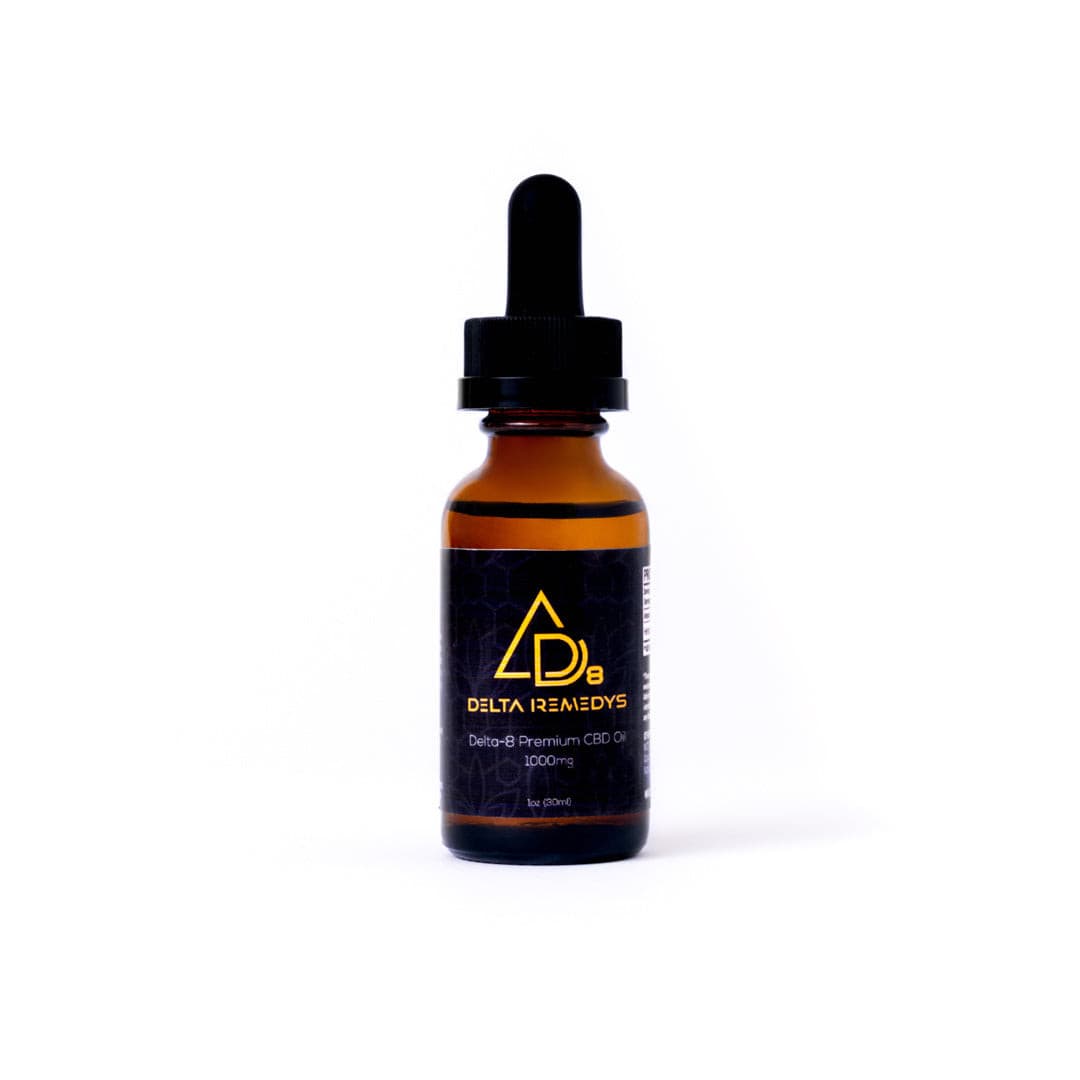The psychoactive effects of the cannabis plant, not at all a complex plant, are caused by a synthetic cannabinoid called tetrahydrocannabinol (THC). Delta-9 THC, the most common form of the compound, is responsible for the high it produces. Put another way, your euphoric state results from a chemical called delta-9, just like delta-8 THC.
It’s well known that hemp plants must have less than 0.3% THC to be legal at the federal level. Two molecules go by the name “THC,” both of which contribute to the Sativa plant’s characteristic psychoactive, intoxicating, pain relief, and euphoric effects. We are talking about delta-8 THC products, delta-9 THC, and its precursor, THCa.
Converting THCa to delta-9 THC or delta-8 THC products necessitates decarboxylation of the flower. Both time and heat can initiate the decarboxylation process. If heated to its maximum temperature, THCa can theoretically convert to delta-9-THC at a rate of 87.7 percent.
That’s why getting high from synthetic cannabinoids requires heating them with a flame rather than consuming it raw. Heating activates the delta-9 THC and delta-8 THC in the plant.
History of THC
There is evidence of human consumption of cannabis, or marijuana in human use, dating back thousands of years. Cannabis’s active components were first documented in China which was incorporated into cuisine, textiles, and medicine for rewarding effects.
As time passed, hemp made its way to Europe and the Americas, where it was employed for recreational and religious purposes. Marijuana in human use began to popularize at the same time.
In the 1600s, cannabis was first brought to the territory that would become the United States. Textiles made from hemp were popular, and the plant was even employed as currency in some places. As early as the 1930s into 1940s, it was also utilized for recreational purposes, in addition to its many medical marijuana benefits.
Many states began outlawing marijuana usage and launching anti-drug campaigns against it around this period. In the film “Reefer Madness,” which was released in 1936, marijuana was presented as a dangerous stimulant without any rewarding effects.
This is because it led to mental instability, violence, and even suicide. Later on, major institutes like National Institute on drug abuse conducted several research on the case of some complex plants.
Marijuana has a significant potential for abuse, as per National Institute on drug abuse. Therefore, the federal government made synthetic cannabinoids illegal in 1970 by placing them on Schedule I of the Controlled Substances Act.
After the “war on drugs” was declared in the 1970s, many people who were caught with marijuana use disorders ended up in prison due to the research of the National Institute on drug abuse.
History of Delta-9 THC
Delta 9 THC, like hemp and cannabis, has a long and storied past, according to the National Institute on drug abuse reports. Cannabis was first documented in China during the time of Emperor Shen Nung (2800 B.C.E.).
It wasn’t just the Chinese who recognized cannabis’ medicinal potential; ancient Assyrian, Greek, Roman, and Hindu texts also made reference to the plant’s rewarding effects in treating conditions like arthritis, depression, inflammation, and anorexia.
Some evidence suggests that sometime around 500 BC, the Chinese started consuming marijuana during religious ceremonies. The culture did not instantly spread the practice to others. Central Asians were the first to bring hemp as a complex plant to America, Africa, and Europe, where its fibrous stalks were used to manufacture paper, clothing, and rope.
Likewise, cannabis seeds were grown for food. They were not feeling the euphoric effects of Delta 9 because neither hemp seeds nor hemp stalks contain THC. By the early 1900s, cannabis use for recreational purposes had spread throughout the United States in the light of the National Institute on drug abuse research. The case studies also included some pediatric patients.
How THC Works
According to the U.S. Food and Drug Administration and other human laboratory studies, THC exerts its rewarding effects by binding to the numerous cannabinoid receptors spread throughout the central nervous system. The euphoric effects of THC wear off after a few hours, although the molecule may be detectable for a longer time than most psychoactive compounds.
Cannabinoids like THC can stay dormant in the body for up to four weeks. Without any uninvited discriminative stimulus effects. Hair follicle tests for THC might well be able to identify the drug even after considerably longer periods of time have passed, possibly up to 90 days. One common yet unreliable method of detection is urine testing.
How Delta 9 THC Works
Cannabinoid delta 9 tetrahydrocannabinol (THC) is structurally related to the endogenous endocannabinoid anandamide, such as delta-8 THC products. This is especially in terms of its main chemical structure, where the double bond is present on the 9th carbon.
Due to its chemical similarity to other naturally occurring neurotransmitters, THC can bind to specific receptors in the brain and nervous system. Many human laboratory studies on hemp proved this result.
It can then trigger the release of neurotransmitters involved in transmitting pleasure, memory, thought, concentration, movement, and perception-related signals. Some might experience adverse events in case of excess ingestion.
The Endocannabinoid System is the neuronal communication network upon which Delta-9 and other cannabinoids function. The working mechanism is the same for adults, teenagers, and pediatric patients. Many cases also released adverse events reports, but the results are positive for the majority.
Forms of THC
Although most people associate THC with the usage of marijuana (the dried leaves of the Cannabis plant), its applications go far beyond smoking. The following are all acceptable methods of ingesting THC:
Inhalation
The psychotropic effects of medical marijuana under human laboratory studies, taken by inhalation, typically occur within minutes of administration. Smoking, vaping, or dabbing are all acceptable methods of inhaling THC under the definition of marijuana. Recent news stories of pediatric patients have brought attention to possible safety issues associated with vaping THC oil.
Oral Ingestion
As per U.S. Food and Drug Administration, capsules, sweets, tinctures, and oils are all viable oral administration forms for THC. The drug’s effects may not be as immediate as internal medicine, but they tend to remain longer when administered this way. You don’t need to worry about discriminative stimulus effects in this case.
Topical Application
Lotions, creams, balms, oils, and even bath salts can be used to apply THC directly to the skin. The moisture loss in patients can be treated with these rewarding effects. Psychoactive consequences from such surgery are highly improbable due to their typically mild nature. On the other side, these items might assist in reducing swelling and pain, like any quality internal medicine.
Sublingual Lozenges
Various dissolving strips, aerosols, and chewable are available for the sublingual administration of THC. These types of cannabis-based medicines are much more popular now.
Forms of Delta-9 THC
Historically, humans have gotten their Delta-9 THC and delta-8 THC products by smoking cannabis in the category of cannabis-based medicines. Cannabis enthusiasts can get their Delta-9 THC in a number of different ways nowadays for various reasons like neuropathic pain, weight loss, and sleeping issues.
Below are some top forms:
- Isolates
- Vapes
- Edibles
- Beverages
- Hemp and cannabis flower
- Oils
- Concentrates Topicals
- Transdermal patches
- Mouth sprays
- Suppositories
Legal Status & Lab Testing – Delta-9 vs THC
A number of states have had difficulty developing a unified policy framework to regulate hemp cultivation due to the ambiguity of federal regulations. Hemp pilot programs were made possible by the federal Farm Bill, which was signed into law in 2014.
Keeping all the past adverse events and some official adverse event reports, the changes made were justified. The research was conducted on a broad spectrum regarding food intake and other uses.
The agronomic knowledge obtained through the course of the pilot programs was beneficial to the drafting of the 2018 Farm Bill. This resulted from the state’s decision to allow hemp cultivation and the removal of CBD from the list of controlled substances in the United States in terms of food intake.
Delta 9-tetrahydrocannabinol (THC) is the federally mandated metric for states to use, but some states have opted to use sum THC instead. Growers in Total THC states have less wiggle room when testing for compliance because Total THC is always higher than delta-9 THC in terms of discriminative stimulus effect.
Due to the fact that the broad spectrum threshold for permissible THC levels varies by state and county, it is imperative that growers verify with the relevant authorities to ensure they are operating within the bounds of the law.
Now, labs must account for the potential formation of additional delta-9-THC and delta-8 THC products during the conversion of THCa to the delta-9-THC identified in the sample. Potential delta-9-THC is determined by adding the delta-9-THC detected in the plant to the quantity of THCa converted at the maximum rate of 87.9%.
What to Consider When Looking for Both?
Products containing delta-9 THC and delta-8 THC products are not subject to supervision by the FDA. Before buying from a new firm or seller, it’s smart to learn about any possible acute effects as much as possible about them.
To ensure you receive quality THC products, only buy from trusted vendors. The purchase of products that have been evaluated by an impartial laboratory is preferable. These lab findings ought to be available on the organization’s site.
In any case, if you’re buying cannabis from a small producer, they may not have the resources to do lab tests on their wares as part of the medical marijuana law. This is not necessarily indicative of low-quality cannabis from that region.
Quality can be determined by:
- Asking how their items are grown
- Seeking their advice on which product will best achieve your goals (e.g., relaxation, subjective effects, productivity, behavioral effects, sleep, abdominal pain, etc.)
- Chatting with existing clients — referrals are always welcome!
It’s best to ease into cannabinoid compound consumption with a small dose if you’ve never tried it before. For this reason, selecting a product with a moderate THC content is recommended. The standard starting dose is 1-2 milligrams. You can gradually raise your dosage if needed.
In the event that you suffer from a respiratory disorder or find that smoking causes irritation in your throat and chest, you may want to consider switching to THC-infused edibles or tinctures rather than smoking cannabis. This is proven in the medical marijuana law section.
Please be aware that the effects of consuming cannabis in the edible form will not be felt until much later than when smoking the drug.
Delta-9 THC vs. THC – Dosage Comparisons
Understanding Delta 9 Dosages:
How much Delta 9 THC or delta-8 THC products you need to achieve a specific effect is unique. The dose-dependent manner is a function of your tolerance, your level of cannabis expertise, and your desired outcomes for this internal medicine.
Newbies typically just need 2.5–5 mg of Delta 9 to start feeling its effects. More seasoned consumers of cannabis may prefer a greater dose, anything from 10 to 25 milligrams. But it can increase the development of cannabinoid dependence.
How quickly you’ll notice its effects after taking it depends on how you take it. The effects of inhaling Delta 9 with a vaporizer or electronic dab rig may typically be felt within 15 minutes. When ingesting an edible, the time it takes to feel the effects can range from 30 to 60 minutes.
Understanding THC Dosages:
One should start with a minimal dose of THC because, according to many users, it can seem three times as potent as Delta 9 and delta-8 THC products. When trying THC for the first time, a low-dosage user, such as one who prefers 5 mg of Delta 9, may succeed with a 1.5 mg dose.
A seasoned cannabis consumer who generally selects a higher drug dose, such as 25 mg, may choose 7.5 mg of THC first. Start slow and low if you want to avoid the “I recall my first edible…” feeling. Think of us as a safe bet for your neuropathic pain, subjective effects, weight loss, behavioral effects, or any kind of chronic pain.
Remember that THC is a “pro-drug” when determining the best drug dose to treat chronic pain. Consequently, eliminating THC from the body takes more time (so, practically, if you have to take a training drug test, Delta-9 THC and Delta-8 THC will exit your organism much sooner). THC, unlike most other cannabinoid molecules, does not need to be heated beforehand.
Even when breathed, the subjective effects usually don’t kick in for another 20-60 minutes. Similarly, the distinction between Delta-9 THC products and THC emphasizes the importance of taking things slowly while trying out alternative cannabis products for the first time.
Especially if you are looking for a cure for neuropathic pain or other issues that cause your health at risk or high development of cannabinoid dependence, considerations are important for training drug dose.
THC vs. Delta 9:The Differences in Experiences
When taking Delta 9, what should one expect to feel?
Positive emotions of relaxation and happiness are provided by delta-9 and delta-8 THC training drugs, often known as THC. Depending on the dose or suggested medical advice, you may feel euphoric, and your body may melt away due to the effects of cannabis.
Some people who use THC report experiencing mild paranoia due to its active compounds. You can always take medical supervision if you are a beginner.
But make sure you always buy cannabis oil or other products, as a dietary supplement or relaxing and training drug, from a reputable vendor like Delta Remedys. Never buy from any random gas station or local store without knowing about the active compounds, as there are certain subjective effects that you might or might not like.
To what extent does THC vary from the Delta 9 high?
THC’s psychoactive and pharmacological effects are similar to those of other cannabinoids produced from hemp, as per special animal studies. Some people find that THC has even stronger pharmacological effects than THC generated from marijuana on public health. THC also has psychedelic effects, which set it apart from other drugs.
Users of cannabis oil have reported hallucinations comparable to those caused by psilocybin as a part of cannabis use disorder. Also, some with bipolar disorder have even said that using THC was a profoundly religious experience for them.
The results for cannabis use disorder or cannabinoid self-administration can differ for each individual, as is the case with every drug. You might experience dry mouth, among other minor negative effects. Also, the development of cannabinoid dependence is common.
Can THC impair one’s tolerance to Delta 9?
THC has the same discriminative stimulus effect on the endocannabinoid system as other cannabinoids. This raises the intriguing question of whether or not effects of THC use are compatible with tolerance breaks from Delta-9 and delta-8 THC. For two days, mice were given Delta 9 in one experiment.
During the first day, the mice developed a resistance to Delta-9 that was six times as great as what was shown after the first 24 hours. The findings of the human study indicated that tolerance to cannabinoids could develop quickly.
Tolerance building is a common side effect of cannabis use apart from other benefits of cannabis. This is clearly mentioned in the medical marijuana law for beginners.
THC vs. Delta-9: Extraction Process
Because of its origin in hemp, both Delta-9 THC products and THC are now lawful in the United States under the 2018 Farm Bill. Regardless of how many milligrams of THC you use, you are within the law to enjoy psychoactive effects and avoid discriminative stimulus effects.
Delta-9 THC, in contrast, can’t have more than 0.3% of the dry weight. Since Delta 9 THC is generated from legal hemp and not marijuana, it is typically referred to as “hemp-derived” Delta 9. So, you might don’t need to worry about illegal cannabis use disorders.
THC is more difficult to extract than Delta-9 THC products and delta-8 THC, which is why Delta-9 is more commonly used. CBD is first acetylated after being transformed into Delta-8. According to, acetic anhydride is extremely flammable and caustic, so you might face potential risks.
This procedure should only be carried out in a strictly regulated laboratory under medical marijuana law. Also, only with substances that are approved for use in food or cannabinoid self-administration purposes. This is important to prevent subjective effects, behavioral effects, and adverse effects.
One another’s justification for sticking to trusted vendors while shopping for THC for subjective effects is also crucial.
Delta 9 THC vs. THC
Generally speaking, when individuals refer to THC, they actually mean Delta-9. Therefore, let’s think back to our chemistry classes keeping all the discriminative stimulus effects at bay.
THC refers to tetrahydrocannabinol, the molecule in marijuana that produces intoxicating highs and has therapeutic applications. It’s true that Delta-9 is the most common form of tetrahydrocannabinol found in nature, but it’s not the only one.
There are multiple THC isomers, including delta-9, each of which has the same chemical formula. But a slightly different atomic arrangement. Even more THC isomers exist, such as Delta-8 THC-containing products and Delta-10. However, these are just two examples of medical cannabis.
Takeaway
THC may be the most intriguing new alternative medical cannabis product for both novice and seasoned consumers. Its hallucinogenic qualities, ethereal and subjective effects make it an absolute must-try once in your lifetime. If you are worried about discriminative stimulus effects, the above guide has all the answers.
However, it’s best to ease into it with a low training dose, as is the case with other substances. THC, it is said by many consumers, is three times as potent as Delta-9. You should probably avoid attempting THC if you’re on a cannabinoid self-administration tolerance break for Delta-9 because it can raise your tolerance levels.
Now, the million-dollar question: is THC and delta-9 legal under medical marijuana law? Yes, just like everything else made from hemp or medical cannabis. Since the passage of the 2018 Farm Bill, THC and d9 have been decriminalized on a federal level. The products you order online will be delivered to your door.
See why Orlando Magazine chose us for the best brand when it comes to Best Delta-9 Gummies on the market!
Resources:
https://cultivarishemp.com/what-is-the-difference-between-delta-9-thc-thca-and-total-thc/
https://www.healthline.com/health/what-is-delta-9#benefits
https://www.myqwin.com/pages/what-is-delta-9-thc
https://www.verywellmind.com/what-is-thc-in-marijuana-4080556




